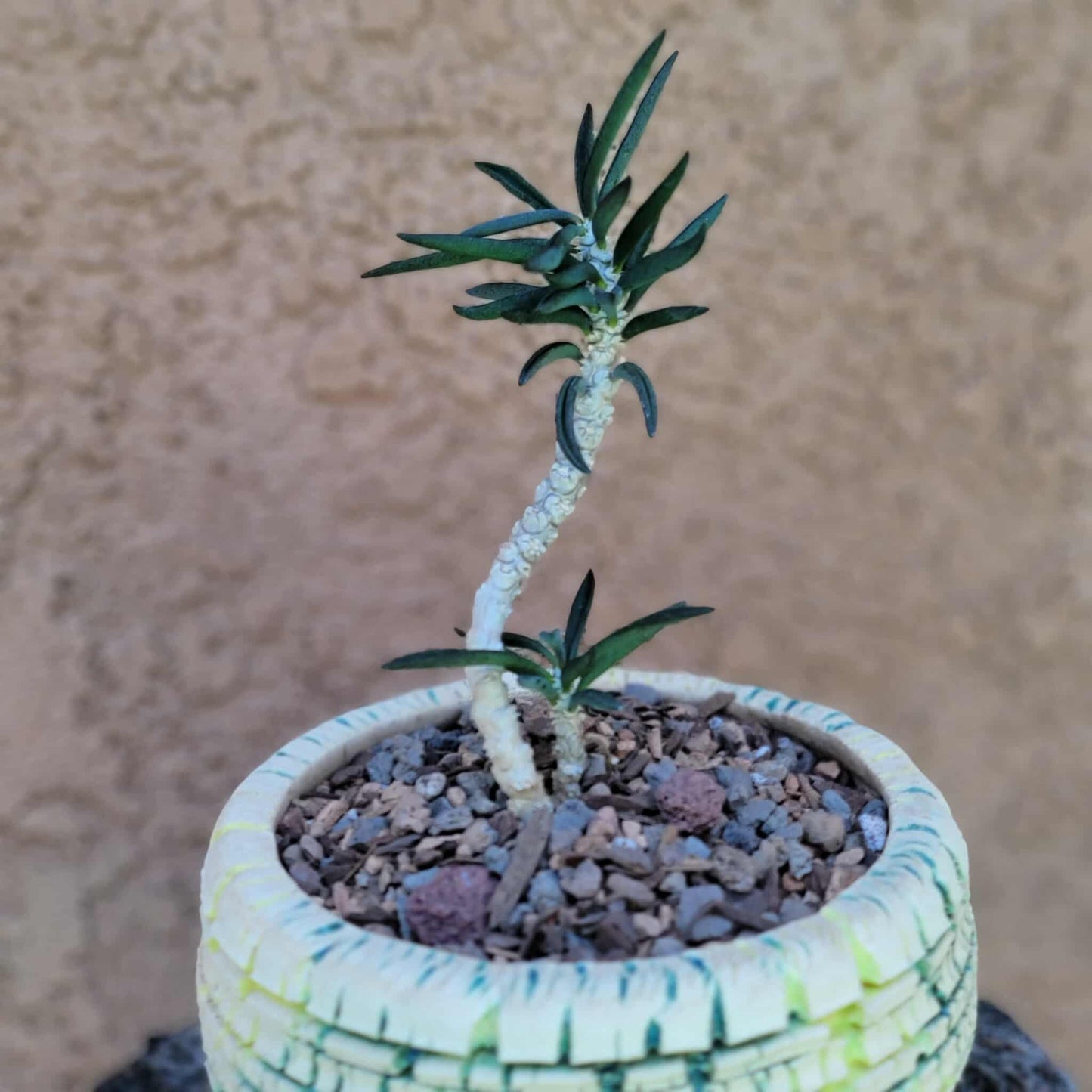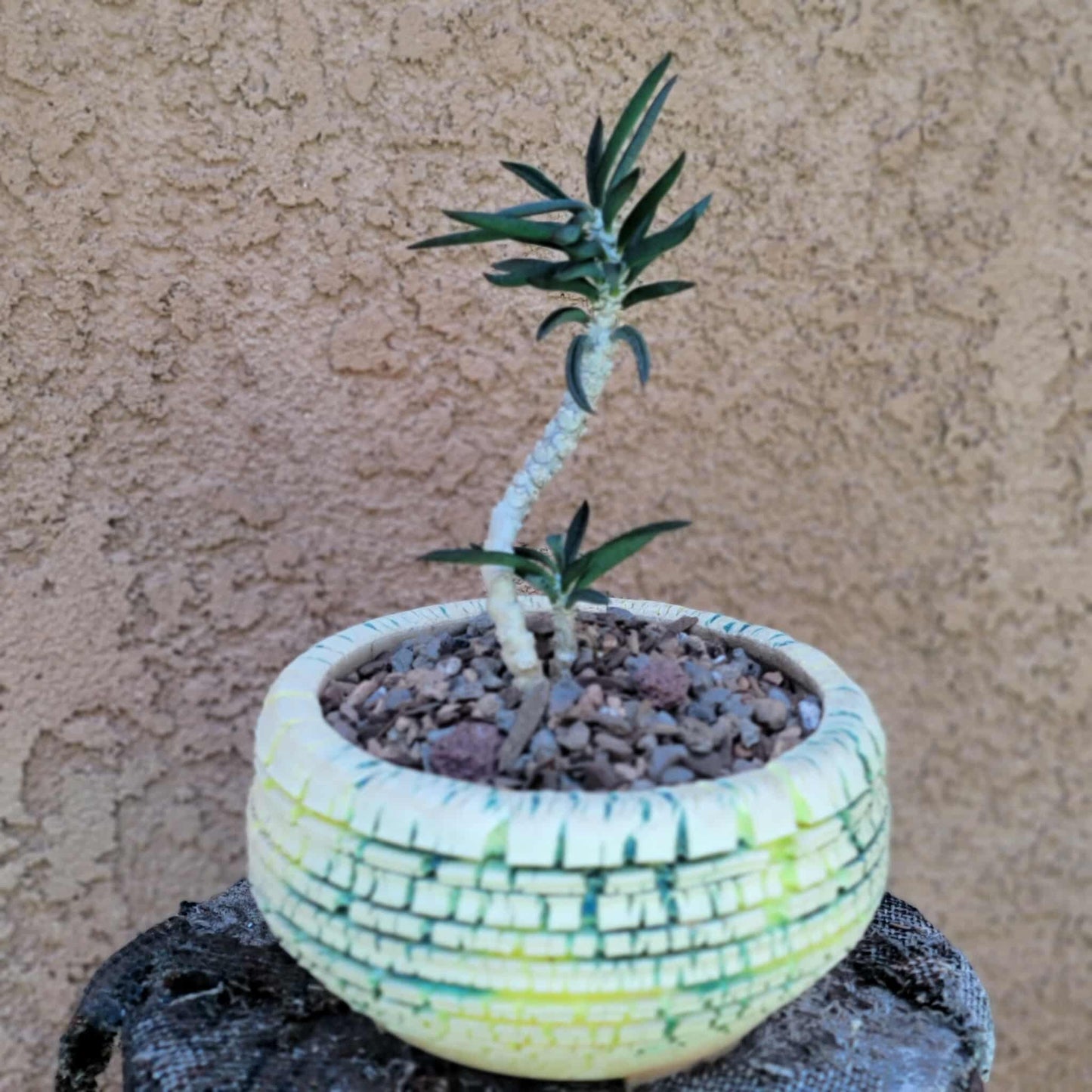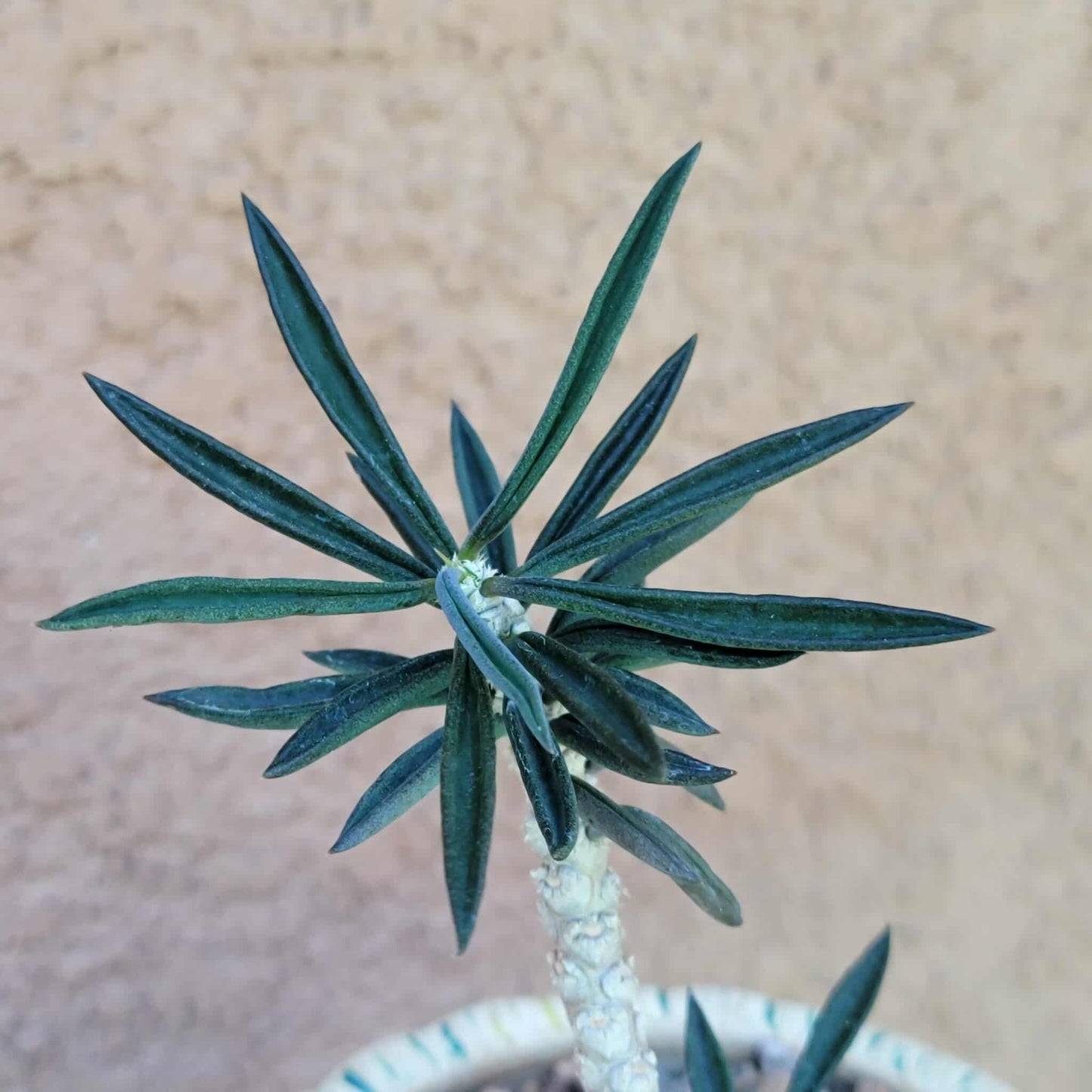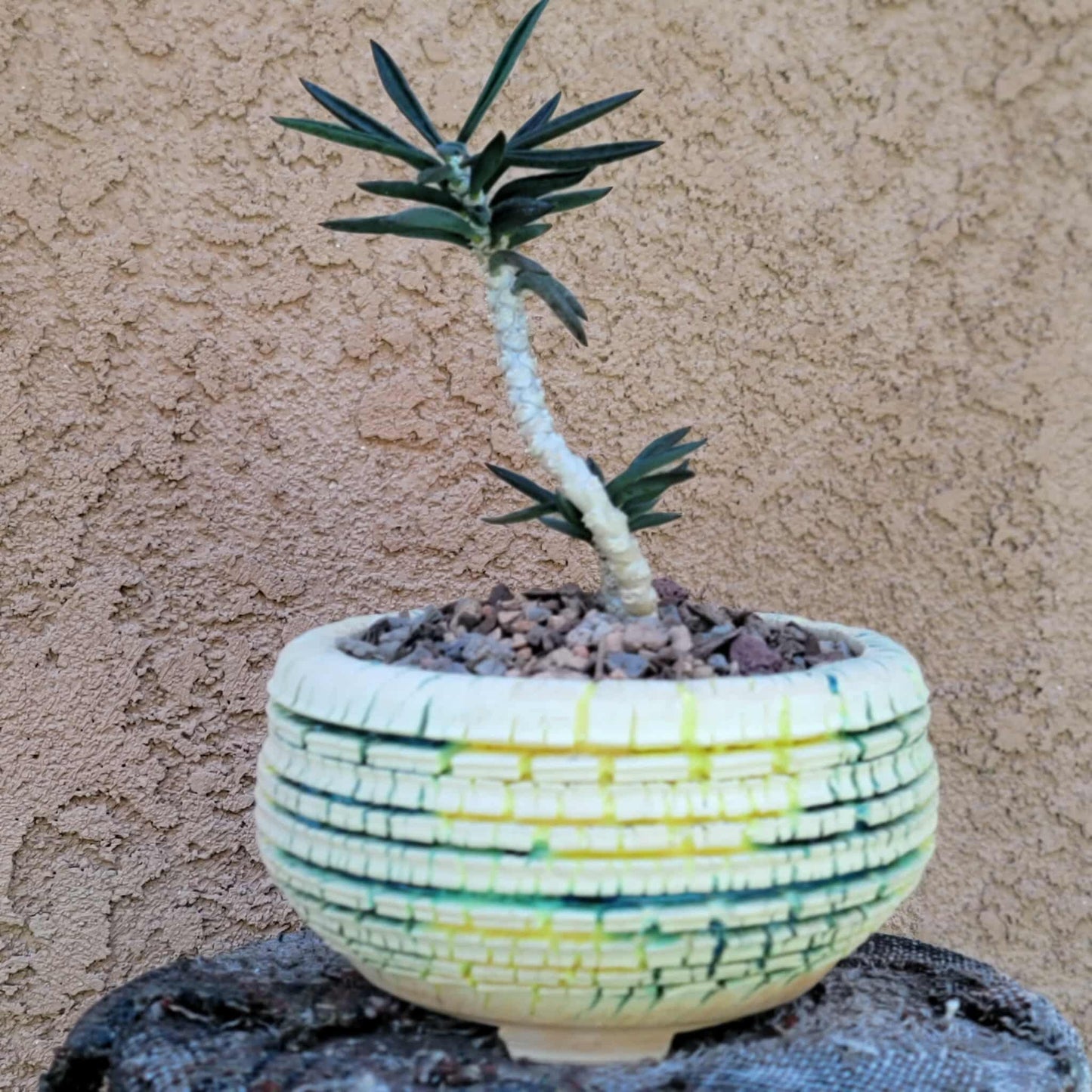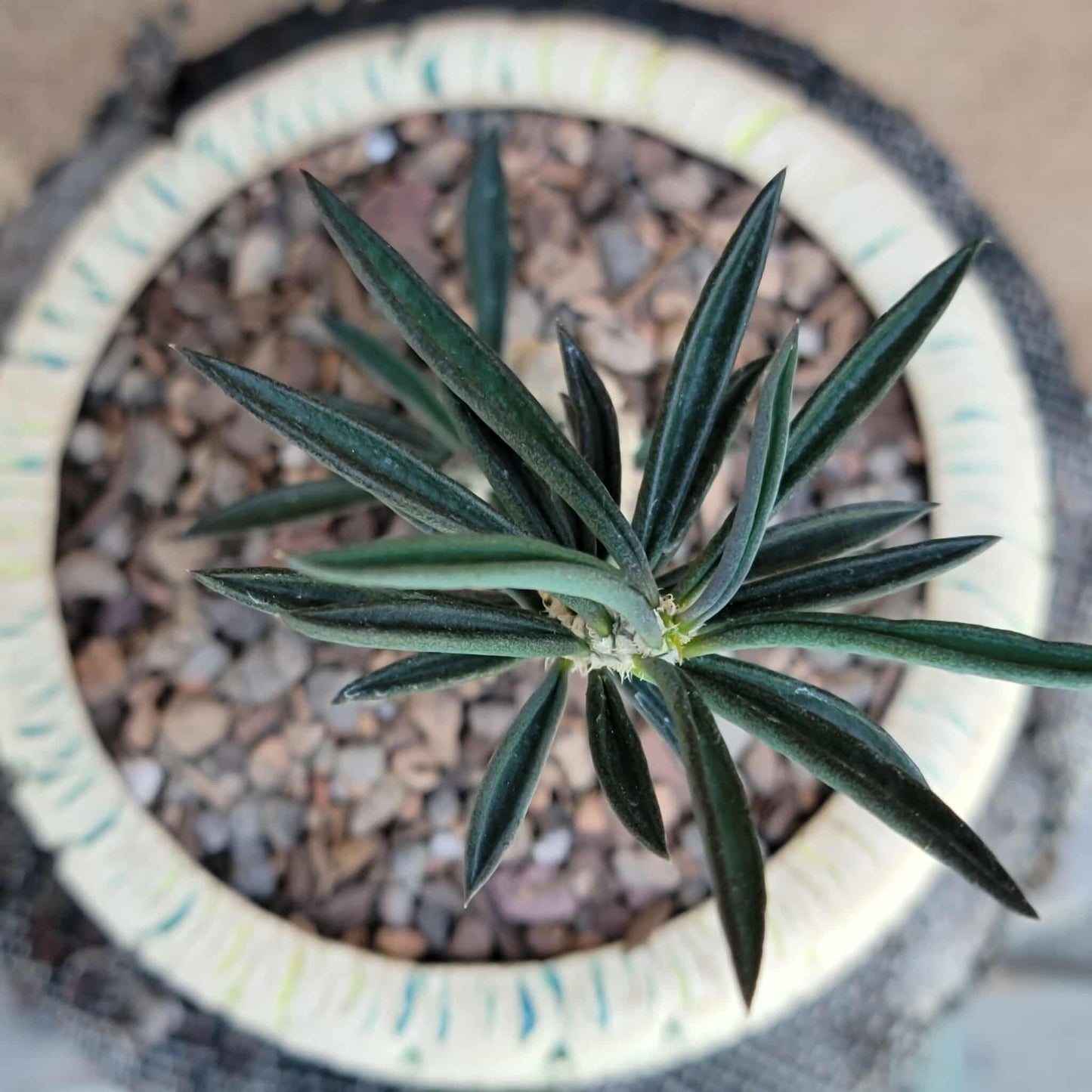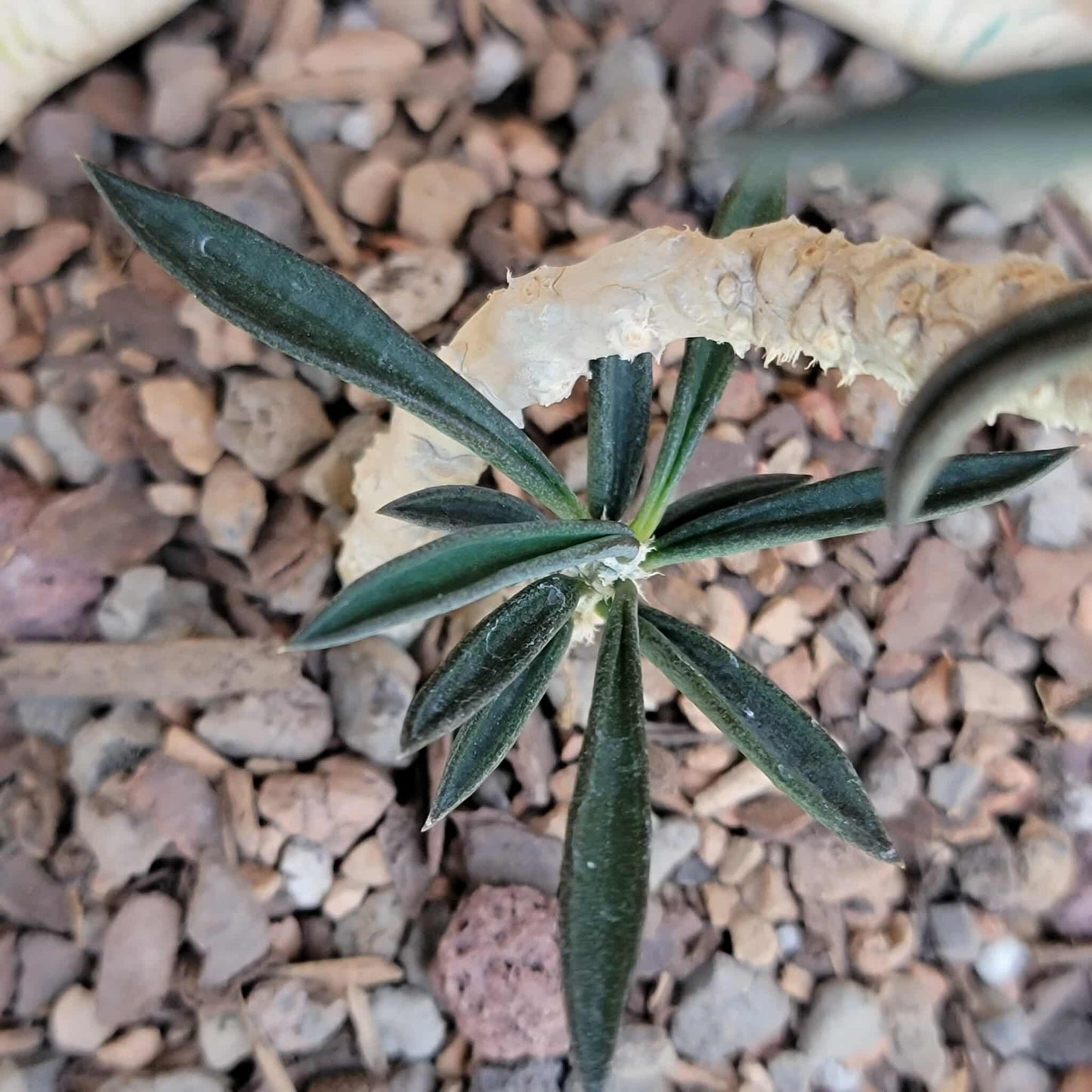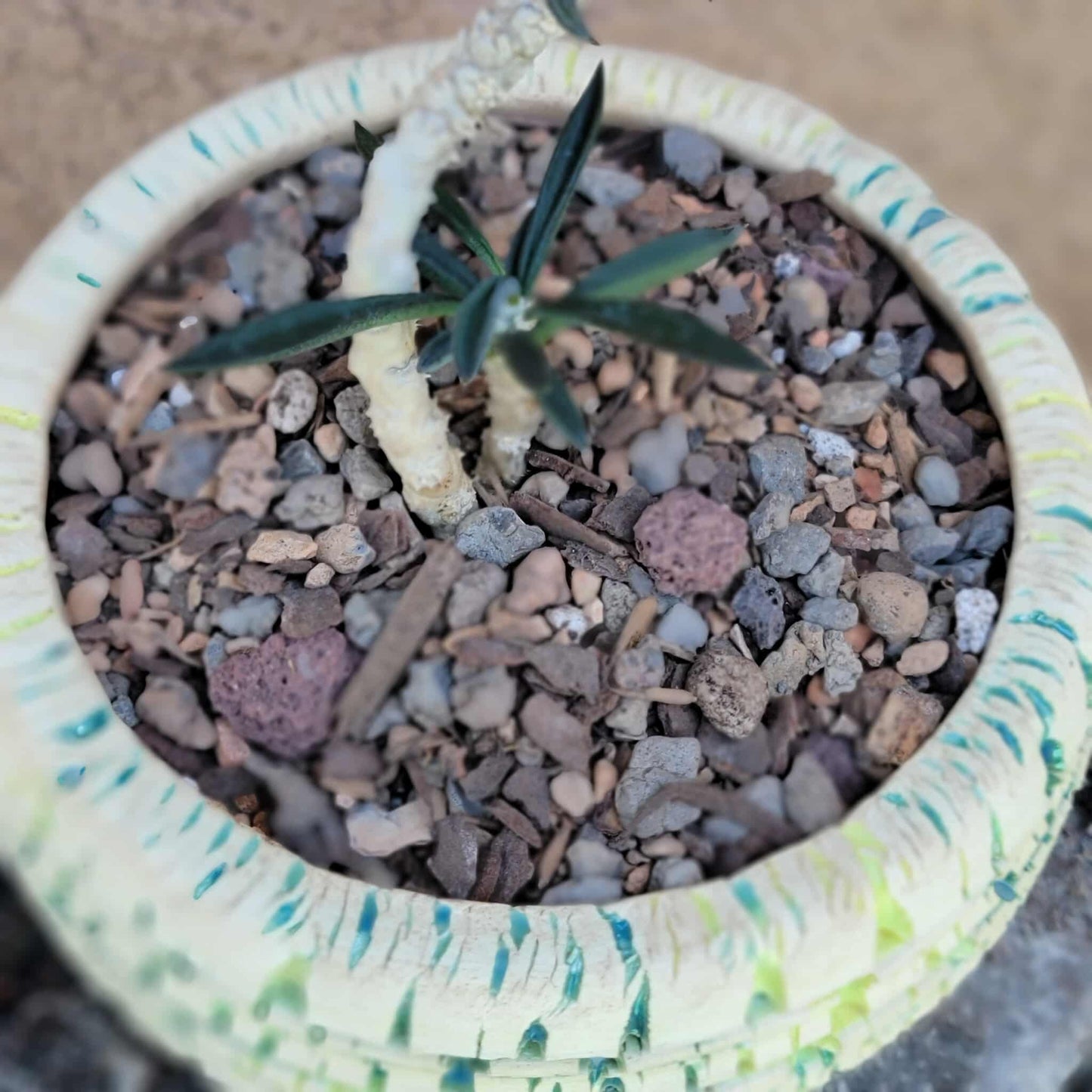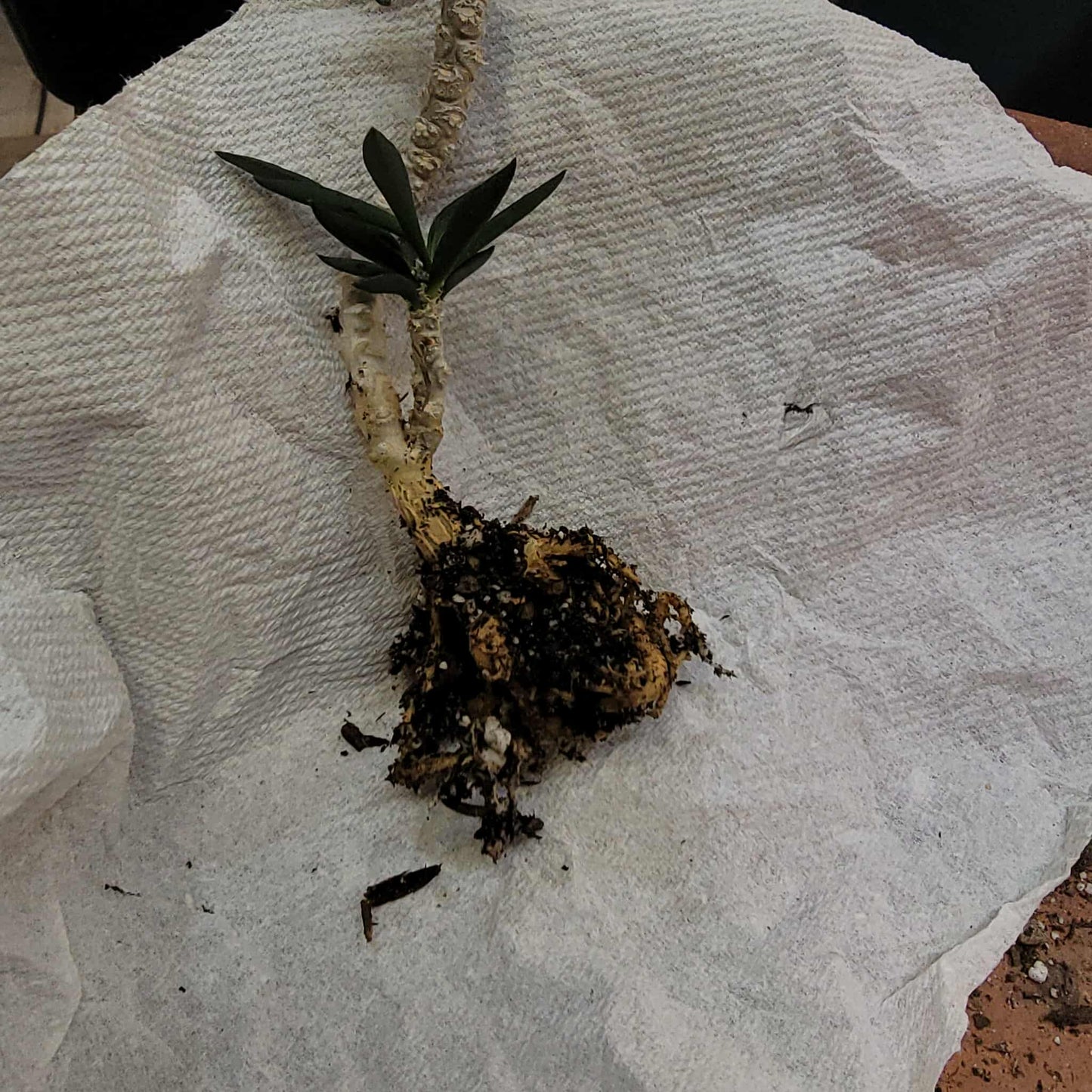Shangri-Ha Cactus Ranch
Euphorbia cylindrifolia
Euphorbia cylindrifolia
Couldn't load pickup availability
Euphorbia cylindrifolia
You will receive this exact specimen.
Measures 6" tall.
Roots as shown.
Showcased here in one-of-a-kind handmade pottery (sold separately).
Will be shipped bare root.
Euphorbia cylindrifolia is a species of succulent plant belonging to the family Euphorbiaceae, known for its unique appearance and belonging to the group of caudiciform plants. It's native to Madagascar, specifically the Fort-Dauphin area in the southeastern part of the island. Its natural habitat includes subtropical or tropical dry forests and shrublands, where it grows alongside other succulent species.
Key Characteristics:
- Appearance: This plant is characterized by a swollen tuberous rootstock, called a caudex, which can be partially exposed above the soil. The stems are narrow and the leaves are short and linear, sometimes with a purplish tint. In time, it can form a dense mat of leaves covering the caudex.
- Growth: Euphorbia cylindrifolia is a slow-growing species, and its caudex takes many years to enlarge.
- Propagation: It can be propagated from seeds, though they have a short viability period and can be challenging to germinate. Propagation via cuttings is more common. Cuttings should be allowed to dry and callus before planting in a well-draining medium.
- Toxicity: Like other members of the Euphorbia genus, it contains a milky sap that can cause skin irritation and allergic reactions. It's crucial to handle it with caution, especially during pruning.
- Conservation Status: Euphorbia cylindrifolia is threatened by habitat loss in its native Madagascar.
Cultivation:
- Sunlight: Full sun to partial shade. Shade can lead to etiolated growth.
- Soil: Requires well-draining soil with a pH between 6.0 and 7.5. A mix of non-organic materials like clay, pumice, or lava grit with some organic matter like peat or leaf-mould is ideal.
- Watering: Water regularly during the active growing season but allow the soil to dry out completely between waterings. Keep almost completely dry during winter dormancy. Overwatering can lead to rot.
- Hardiness: Tender, ideally suited for USDA Zones 10-11. Can tolerate summer outdoor conditions but requires protection from frost.
- Fertilization: Does not require heavy fertilization. A cactus and succulent fertilizer with high potassium can be used during the summer.
- Pruning: Prune in early spring to maintain shape and remove dead stems. Remember to wear gloves and eye protection due to the toxic sap.
- Pests and Diseases: Generally resistant to pests, but mealybugs can occasionally be an issue. Overwatering can lead to root rot.
Euphorbia cylindrifolia is a desirable plant for caudiciform enthusiasts. Its slow growth rate and tendency to form a large caudex make mature specimens highly valued.
